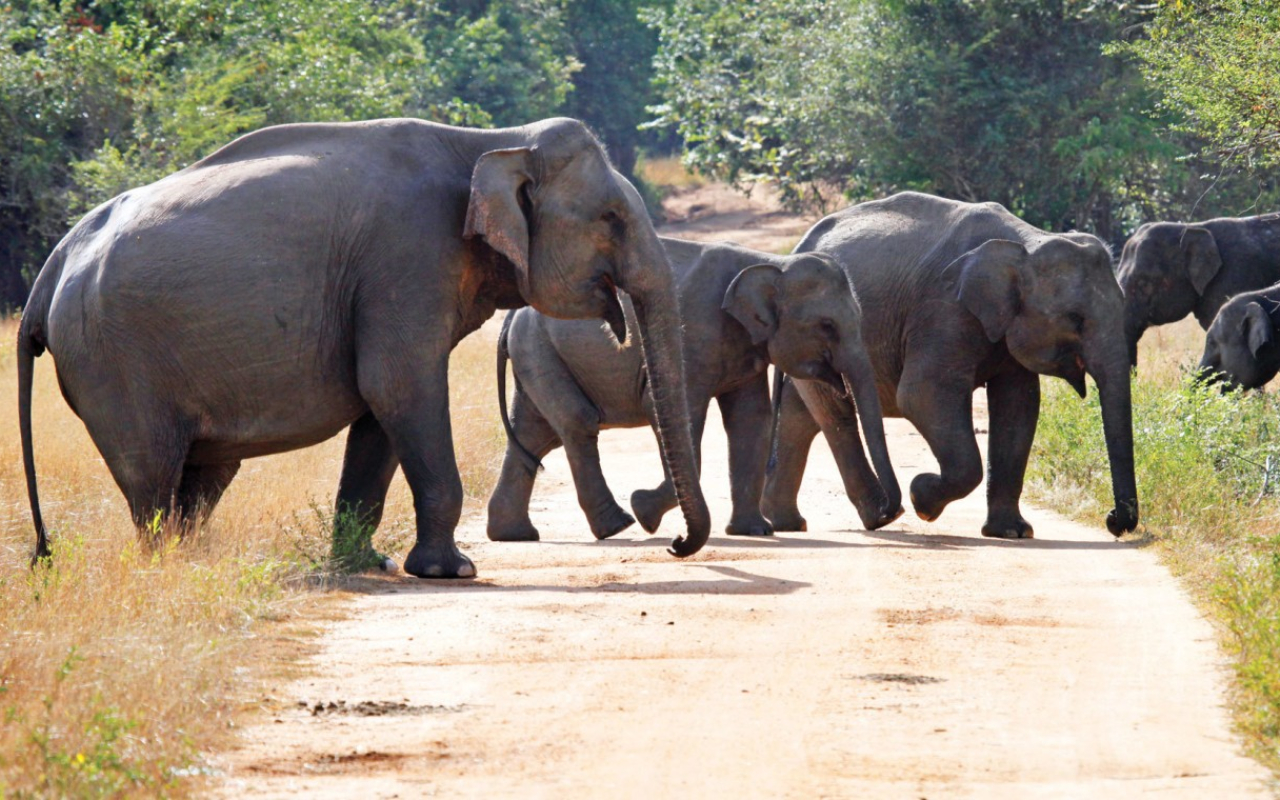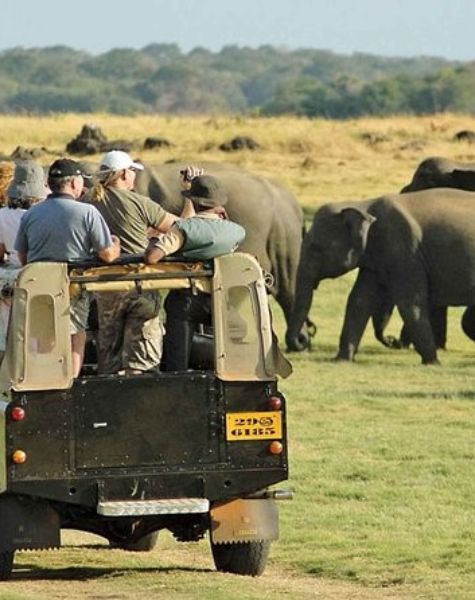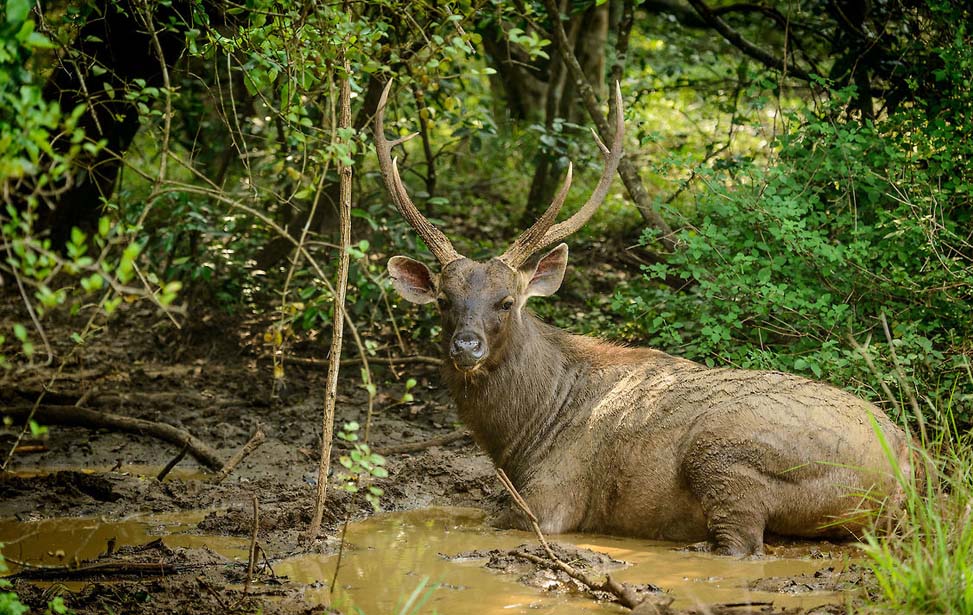You would hardly have heard about Wasgamuwa. And rightly so, too, because it is one of Sri Lanka’s best-kept secrets. It is arguably the finest stage for witnessing wild elephants in their natural splendour. Tucked away from the usual tourist trails, Wasgamuwa offers a raw, untamed experience where the rhythm of nature takes the lead, and the stars of the show are the majestic Asian elephants that roam its jungle terrain in herds, undisturbed and free. So, if you are keen on sightings galore, here’s why Wasgamuwa is your trusted destination.
Where is it?
Wasgamuwa National Park sits skirting central Sri Lanka’s lush forested mountains, bordering the Mahaweli River, south of the UNESCO-listed ancient city of Polonnaruwa. Two more rivers – Amban Ganga and the Dunuwila Oya border its northern and western sides. The rivers play a vital role in the park’s rich biodiversity.
High Density of Wild Elephants
Wasgamuwa is home to one of the highest populations of wild elephants in Sri Lanka. Estimates suggest that over 150–200 elephants roam the park year-round. The best time to see Elephants here is from November to May as herds migrate to the nearby Minneriya National Park during the dry season (usually from July to October). The park boasts a diverse ecosystem, consisting of dense forests, open plains, grasslands and riverine habitats, which are ideal terrain for elephants to forage, bathe and travel in herds.
Carefree Elephant Behaviour
Because Wasgamuwa is less commercialised and elephants here are less accustomed to human presence, visitors often observe more natural behaviours, from playful calves to protective matriarchs. Visiting Wasgamuwa can also reduce the human impact on popular national parks, such as Yala and Udawalawe. Due to fewer jeep safaris, there is no traffic or delay, allowing visitors to spot elephants without distraction.
High Biodiversity
Wasgamuwa National Park has one of the highest biodiversity among the national parks in Sri Lanka. Numerous species of trees, plants and flowers add to its repertoire. These include a tamarind tree more than 1,700 years old. The rivers, ancient reservoirs and streams in and around the area have created thriving aquatic birds and amphibian habitats.
More Than Just Elephants
While Wasgamuwa is famous for its elephant herds, the park is also home to many other animal and bird species.
Sloth Bear – The name Wasgamuwa means “bear forest” in Sinhala. The park is famous for its namesake sloth bear, a rare bear species and one of Sri Lanka’s Big Five. You have a good chance of spotting the Sri Lankan sloth bear, especially during the fruiting season when they come out looking for their favourite palu fruit.
Sambar Deer, Spotted Deer (Axis Deer) and Wild Boar – These are commonly seen grazing in open plains or near water bodies.
Water Buffalo – Often found wallowing in mud pools or marshy areas, adding to the wild charm of the park.
Purple-faced Langur and Toque Macaque – Two species of monkeys frequently spotted swinging through the canopy or foraging near forest edges.
Although leopards are known to live in the park, sightings are rare.
Wasgamuwa is an Important Bird Area (IBA) in Sri Lanka, with 143 recorded bird species. These include endemic, migratory and rare species. The diversity of flowering plants and forest types in Wasgamuwa supports a variety of butterflies and insects, adding colour and life to the undergrowth. Observant visitors may spot rare species fluttering through the forests during the warmer parts of the day.
Attractions Around Wasgamuwa
Wasgamuwa isn’t just a destination for safaris – the surrounding area is rich in cultural landmarks, natural beauty and off-the-beaten-path experiences that make the region worth exploring beyond the park boundaries. Here are some top things to do near Wasgamuwa:
Explore the Ancient City of Polonnaruwa (1.5 hours away)
A UNESCO World Heritage Site, Polonnaruwa, is one of Sri Lanka’s most important ancient capitals. Walk among ruins of royal palaces, massive Buddha statues, intricately carved temples and advanced irrigation systems – all dating back centuries. It’s a must-visit for history lovers.
Visit the Maduru Oya National Park
Just east of Wasgamuwa lies Maduru Oya National Park, another lesser-known wildlife paradise. It’s less touristy than other parks and offers a good chance of spotting elephants, deer and endemic birds. The park also contains remnants of ancient Sinhalese civilisation, including shrines, temples, dagobas, hermitages and statues. Bordering the park are villages of the Vedda people, the indigenous people of Sri Lanka.
Discover the Dimbulagala Monastery
Located near Polonnaruwa, the Dimbulagala Monastery is an ancient Buddhist site carved into a rocky hill. Climbing to the summit rewards visitors with panoramic views of the surrounding plains and forests – a tranquil and spiritual detour.
Hike in the Knuckles Mountain Range (2 hours away)
If you’re up for a scenic detour, head west to the Knuckles Conservation Forest, a UNESCO-listed biosphere reserve. It’s perfect for hiking, birdwatching, and immersing yourself in cloud forests, waterfalls and remote villages.
Visit Sorabora Wewa and Mahiyangana Temple
A little further southeast, you can visit Sorabora Wewa, an ancient reservoir with one-of-a-kind sluice gate. Nearby, the Mahiyangana Raja Maha Viharaya is one of the sixteen holiest Buddhist temples in Sri Lanka, which marks the site of Buddha’s first visit to the island.
An Immersive Sri Lankan Elephant Experience with Blue Lanka Tours
You can never get tired of the sights of the majestic Sri Lankan elephant. They mesmerise us in every way, from how they feed to bathe. However, we also want to make sure our curiosity is not intrusive. The lesser-known Wasgamuwa National Park offers an authentic, less commercialised safari experience. You can observe herds of elephants at your own pace, without the crowds. It is a wonderful place to immerse oneself in the wilderness peacefully.
Blue Lanka Tours consciously crafts tailor-made tours for responsible travel in Sri Lanka. Whether you are discovering Sri Lanka as a family, couple, group of friends or solo, we create experiences that are authentic, unique, meaningful and worth every air mile. As a travel company passionate about sustainability, we give back to communities, wildlife organisations, and conservation groups to empower, protect and preserve Sri Lanka’s cultural and natural beauty. Is the Asian Elephant on your safari list?



